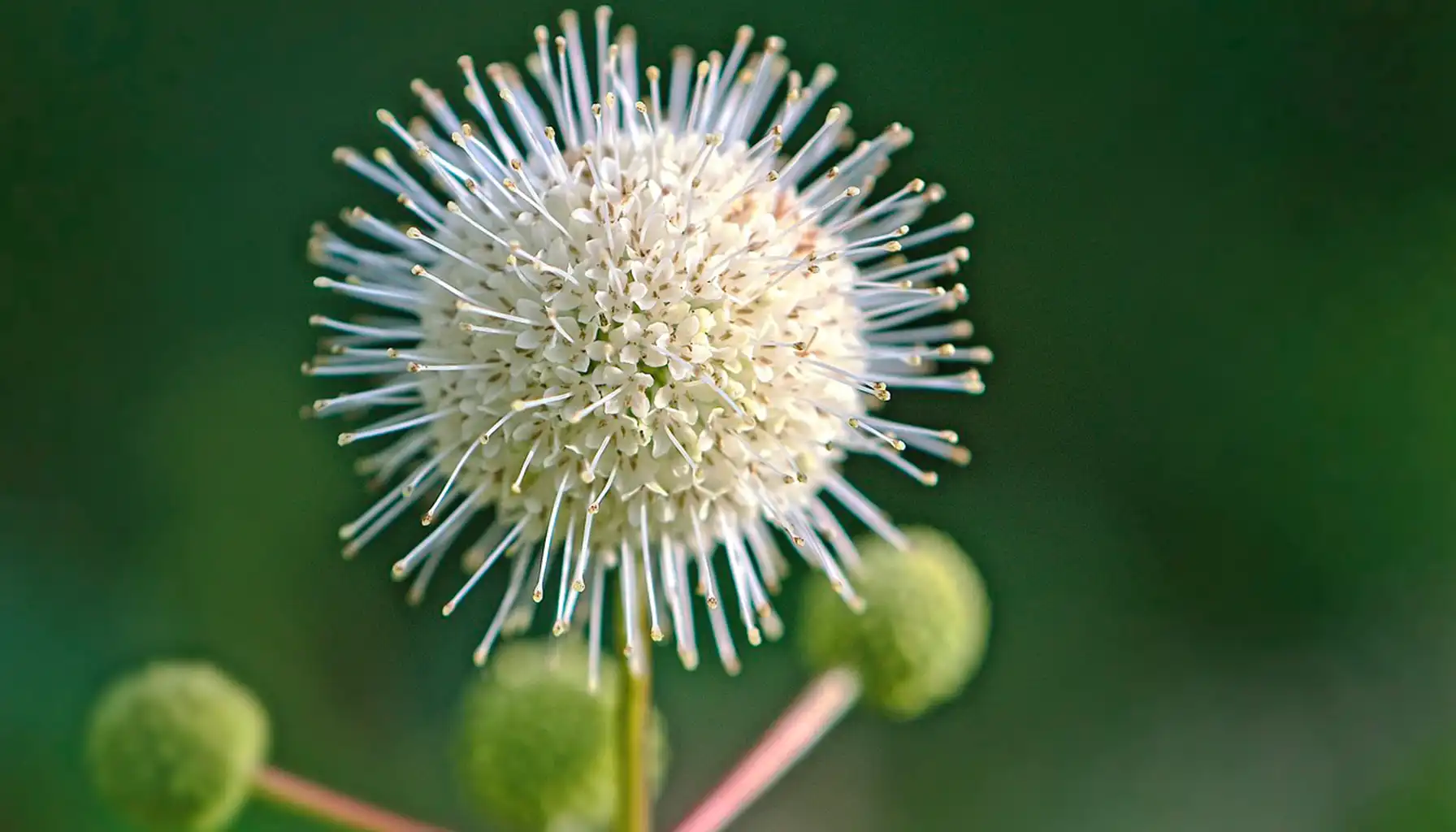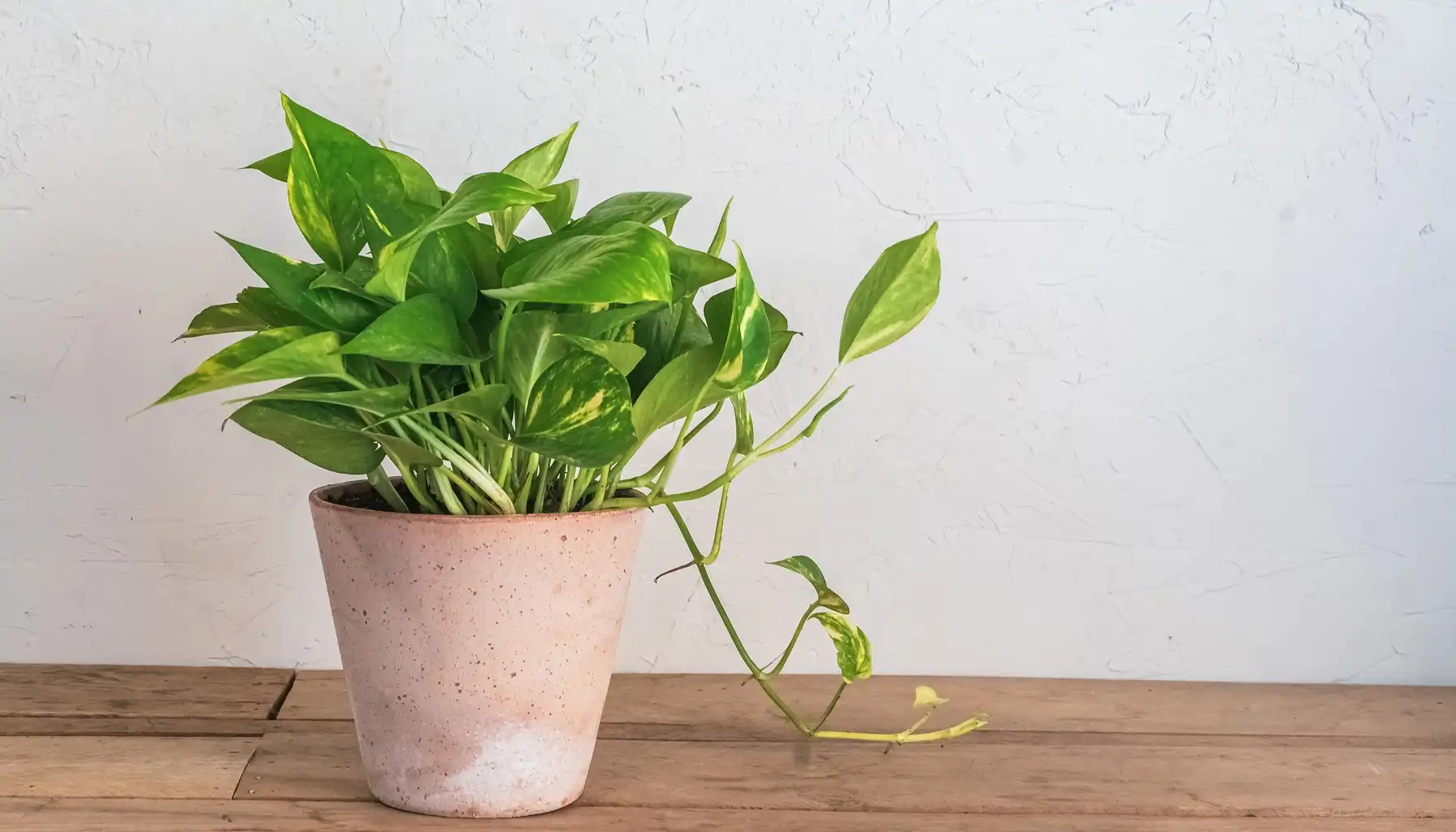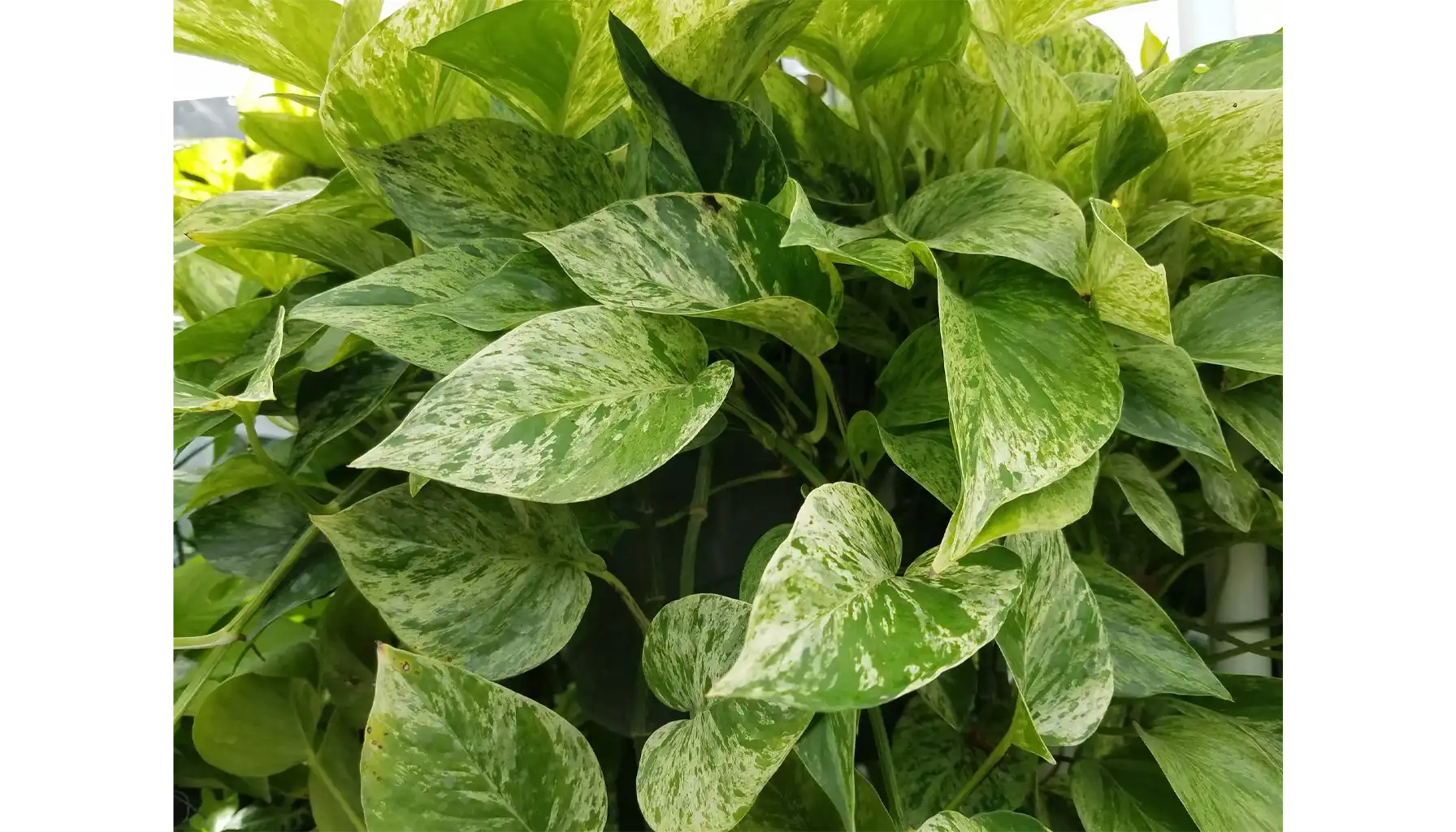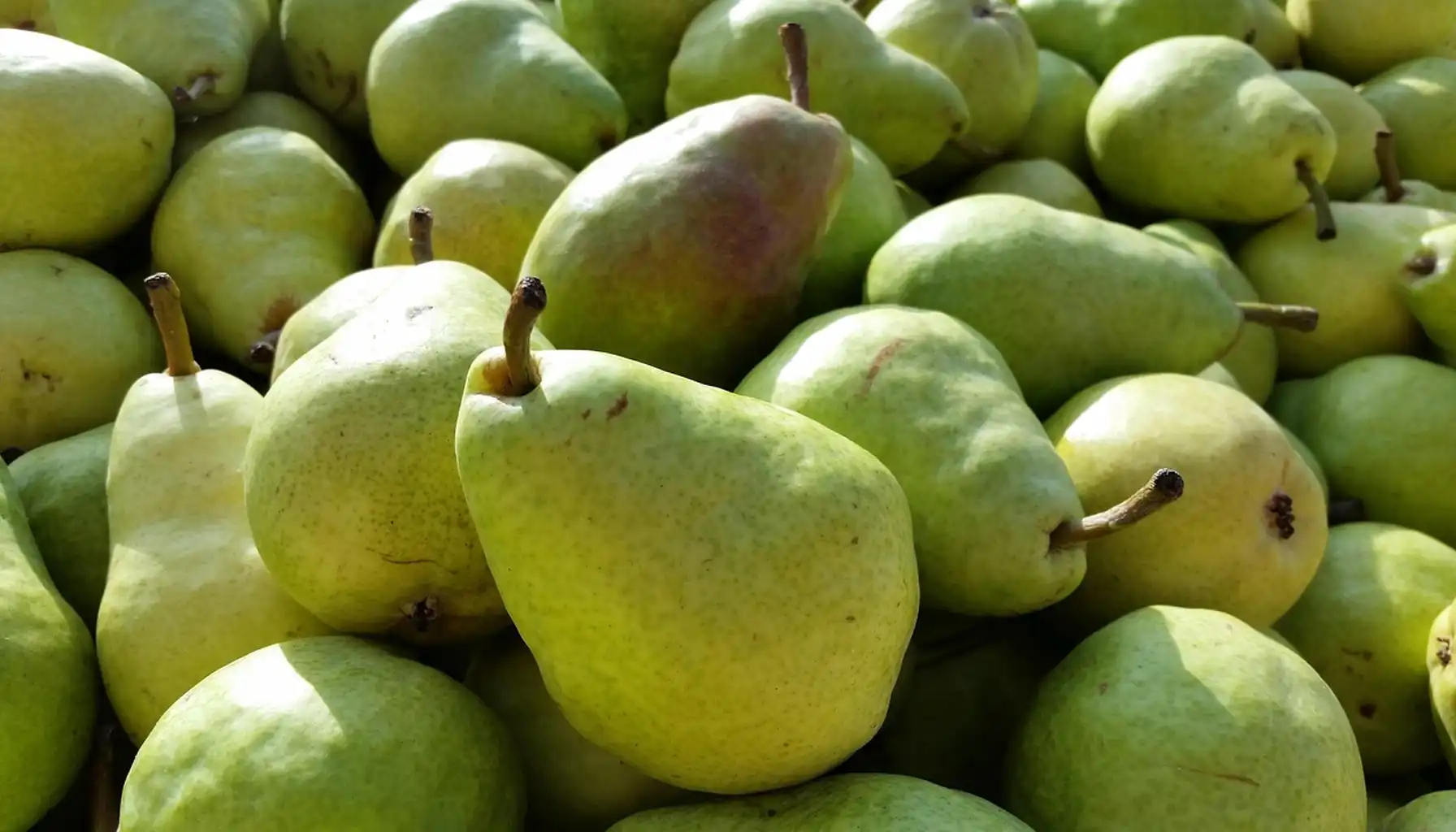Gardening is one of the most flexible lifestyle choices – one may engage in container gardening, vertical setups, indoor houseplant care, or full-scale backyard cultivation. And the range of such activities may expand progressively, for it depends on the imagination and aspirations of a given enthusiast rather than the sphere's limitations alone.
Among the many plants that are frequently incorporated into the garden settings is the pothos, i.e., an evergreen vine with rich, lush foliage and a mysterious name. Minimal care is the most appealing feature, yet one must remember that beauty should be cultivated, not waited for.
So, what are the benefits of a pothos plant? What is the best way to grow it both indoors and outdoors? And which features identify this plant as a distinct and reliable choice for your garden?
What Is Pothos In Fact?
Pothos is the name that may have brought discussions even today (and for a good reason). What most houseplant lovers call "pothos" is actually a species named Epipremnum aureum, i.e., a hardy, fast-growing vine from the island of Mo'orea in French Polynesia that belongs to the Araceae family, which includes many common houseplants like philodendrons, monsteras, and peace lilies.
According to the scientific books, Epipremnum aureum was first classified under the genus Pothos. However, it was later temporarily placed in other genera, i.e., Rhaphidophora, before being correctly identified as a distinct species in Epipremnum. Notwithstanding the fact that it is no longer a pothos from a botanical perspective, the name still remains the widely accepted and familiar term for this plant in the horticultural world.
Let us clarify this take: true pothos refers to a separate genus that includes around 70 species of climbing plants found in tropical Asia, Oceania, and parts of Australia. These species are rarely grown indoors and differ from Epipremnum aureum in appearance and care needs. The version which is likely grown at home is Epipremnum aureum, i.e., an evergreen vine with heart-shaped leaves, often marbled or variegated in shades of green, gold, or neon yellow.
Note: From this point in the article, we are going to use the term “pothos hanging plant” and its derivatives to refer to the Epipremnum aureum and keep it traditional.
The Main Characteristics |
Common Names | Pothos, Devil’s Ivy, Golden Pothos Plant, etc. |
Botanical Name | Epipremnum aureum |
Family | Araceae (arum family) |
Origin | Mo‘orea, Society Islands (French Polynesia) |
Plant Type | Evergreen vine |
Growth Habit | Climbing or trailing via aerial roots |
Mature Size (Indoors) | Vines up to 6 to 10 ft (1.8 to 3 m) or longer with support |
Leaf Shape | Heart-shaped; entire in juveniles, pinnatifid in mature plants |
Leaf Size | Juvenile: up to 8 in (20 cm); Mature (outdoors): up to 39 in (100 cm) |
Flowering | Rare to non-existent indoors (although it is an angiosperm, some species may not bloom at all) |
Toxicity | Toxic to cats, dogs, and mildly toxic to humans |
By the way, according to "Purification Characteristics of Pothos for Airborne Chemicals in Growing Conditions and Its Evaluation" by Ayako Sawada and Takashi Oyabu, when grown in potting soil, pothos is especially effective at removing common indoor air pollutants such as formaldehyde, toluene, and xylene.
Pothos Indoor Plant Cultivars
The popularity of Epipremnum aureum has led to the development of numerous hanging pothos plant types, each bearing its distinctive color patterns, leaf shapes, and unique vibe. Here are the most well-known varieties that are currently available on the market:
Golden P.: Bright green leaves with irregular golden-yellow variegation.
Neon P.: Solid, vivid chartreuse or neon-green leaves.
Jade P.: Deep, solid green leaves with no variegation.
Marble Queen P.: White and green marbled leaves with high variegation.
Pearls & Jade P.: Small green leaves with white and gray speckles along the edges.
N’Joy P.: Green leaves with creamy white, sharply defined margins.
Global Green P.: Muted green leaves with subtle two-tone variegation.
Manjula P.: Broad, wavy leaves with swirls of cream, silver, and green.
Jessenia P.: Lime-green marbled variegation on medium-green leaves.
Ideal Growing Conditions
When it comes to the pothos plant care indoors, it is vital to acknowledge the most appropriate conditions set by its habitat. There is no great difference between care plans for Pearls & Jade or Marble Queen varieties – consistency is all that matters. So, how to care for a pothos plant, and what does it need to thrive?
Light
We cannot call these plants "fastidious" or "picky", even though their preferences are rather specific. While they do tolerate low light, they grow best in bright, indirect light that mimics their natural tropical habitat.
Thrives in bright, indirect sunlight
Tolerates low light, but growth may slow, and variegation can fade
Avoid direct sunlight, which can scorch leaves
East- or north-facing windows are often ideal
Watering
Tropical habitat also presupposes that the soil should occasionally dry out before watering. Overwatering, on another spectrum, is a common mistake that can lead to root rot and other unpleasant consequences to be healed.
Water when the top 1 to 2 inches (2.5 to 5 cm) of soil are dry
Reduce watering frequency in the winter months
Use room temperature water only (no fluctuations permitted)
Ensure pots have drainage holes to prevent waterlogging
Watch for yellow leaves as a sign of overwatering
Drooping with firm leaves may indicate underwatering
Related article: How Often Should You Water Your Plants? A Seasonal Guide
Temperature
As a tropical plant, the plant pothos enjoys warm temperatures and does not tolerate frost, which is obvious. They do well in most indoor climates but are sensitive to cold and sudden temperature fluctuations as well.
Ideal range: 65 to 85°F (18 to 29°C)
Avoid exposure to temperatures below 50°F (10°C)
Keep away from cold windows, air conditioning vents, or heaters
Maintain consistent temperatures without drastic changes
Humidity
Humid conditions are basic for the plant, which is why they prefer high humidity and can tolerate the one found indoors, in homes. Nonetheless, the higher the percentage, the faster the plant grows.
Comfortable in average household humidity (30 to 50%)
Enjoys higher humidity (60%+) for more vigorous growth
Mist occasionally or use a humidifier in very dry environments
Group with other plants to create a microclimate
Avoid placing near dry heat sources
Soil
The right is the key. It lays the foundation for the living being to grow, develop, and thrive, while staying healthy and free from certain conditions that impede growth.
Use a well-draining potting mix
Ideal components include peat moss, perlite, and pine bark
Avoid compact or heavy soils that retain too much water
A cactus or aroid mix can work well when amended with organic material
Consider adding charcoal or orchid bark for extra aeration
The ideal soil pH range is 6.1 to 6.8
Tolerates slightly outside this range, but avoid alkaline soils (above 7.0)
See also: Soil Control: The Importance of pH Adjustment in Agriculture
To make this experience less daunting, one may refer to apps like AI Plant Finder to identify and diagnose garden inhabitants, learn more about their features, calculate water needs, check the illumination, set up care reminders, and even more! Gardening should not be a burden – it is a blessing.
Pothos Plant Propagation Explained
There is no such thing as too many plants. However, to expand the garden, it is vital to understand how to multiply them for free correctly. Basically, there are two major ways: in water or soil. Yet, the core of the process is the same.
Step 1: Select a healthy vine. Choose a mature, vigorous, long vine with firm stems and several healthy leaves. It is important that the section you choose includes at least one or two nodes (i.e., the small bumps along the vine where leaves and roots grow). |
Step 2: Take the cutting Use clean, sharp scissors to cut a section of the vine (about 4 to 6 inches long). Make sure to cut just below a node, for this is where the new roots are to develop further. |
Step 3: Prepare the cutting. Remove the leaf closest to the cut end of the vine. This is how you give space for roots to emerge without leaves getting rotten. Leave at least one or two leaves at the top of the cutting to help the plant produce oxygen and photosynthesize. |
Step 4: Root the cutting in water or soil. Option 1. Place the cutting in a glass jar filled with clean, room-temperature water. The node should be fully submerged, but the leaves must remain above the water line. Place the jar in bright, indirect light and refresh the water every few days. Option 2. Instantly plant the cutting in moist, well-draining potting mix with the node beneath the surface. The area should be warm, well-lit, and consistently humid (this facilitates the rooting process). |
Step 5. Wait for roots to develop. This usually takes about one to two weeks for new roots to emerge. |
Step 6: Transplant (if rooted in water). As soon as the roots in water are 2 to 3 inches in length, you are finally free to move the cutting into a pot with soil. Water it well after transplanting, and let it adjust to its new environment. |
Step 7: Care for your new plant. Your care is vital! After transplanting, provide bright, indirect light, water when the top inch of soil feels dry, and avoid fertilizing for the first few weeks to give the plant time to settle in. Let it stabilize and watch your garden thrive! |
Is It Safe for Pets and Humans?
Is the pothos plant toxic to cats and dogs? Well, yes, it is. Although this natural creation is a popular houseplant, most people overlook its toxic potential, for it contains insoluble calcium oxalate crystals, which can cause irritation and mild toxicity.
For cats and dogs, chewing on pothos leaves can lead to symptoms such as oral irritation, drooling, vomiting, and difficulty swallowing. Although it is rarely fatal, it can cause significant discomfort and should be treated on time.
In humans, particularly young children, accidentally ingesting the plant may cause a burning sensation in the mouth, throat irritation, and, in rare cases, digestive upset. Skin contact with the sap may also cause mild irritation, though it is not so frequent.
Keep this toxic plant out of reach of pets and small children, wash your hands after pruning/propagation/repotting, and always reach out to the specialists if someone in your family, be it a child or pet, happens to ingest it.
Let your pothos thrive, and it will return your care with endless green beauty and quietness to joy.
AI Plant Finder Related Posts






